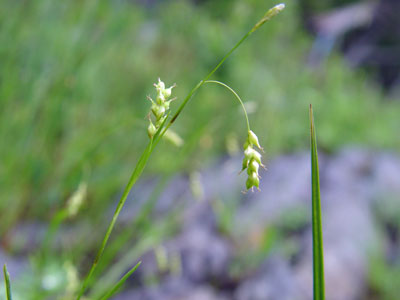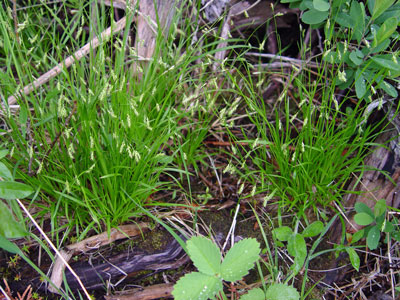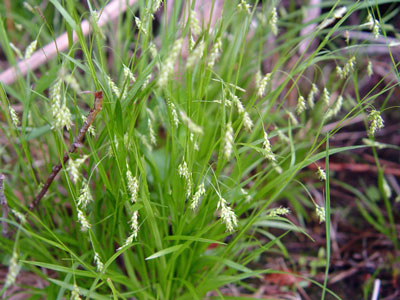DACF Home → Bureaus & Programs → Maine Natural Areas Program → Communities, Plants, and Animals → Rare Plants → Carex capillaris
Carex capillaris L.

Capillary Sedge
- State Rank: S2
- Global Rank: G5
- State Status: Special Concern
Habitat: Damp, springy, or mossy calcareous woods, thickets, shores, and wooded swamps. [Rocky summits and outcrops (non-forested, upland); Non-tidal rivershore (non-forested, seasonally wet); Forested wetland; Open wetland, not coastal nor rivershore (non-forested, wetland)]
Range: Arctic/alpine regions of Canada south to New England, and west across the northern U.S. to Saskatchewan.

Aids to Identification: Identification of species of the Carex genus is usually difficult and dependent upon rather technical characters. C. capillaris is the sole species in our region in the section Capillares. It is identified by its densely tufted growth, cluster of basal leaves, spreading pistillate spikes, and its 2-ribbed, short-beaked, elliptic perigynia, 2.4-3.3mm long.
Ecological characteristics: In Maine this sedge is known to occur in a variety of calcium-rich, wet habitats, including ledges, talus slopes, ditches, cedar swamps, and bogs.
Phenology: Fruits late June - August.

Family: Cyperaceae
Synonyms: Represented in Maine by ssp. capillaris. Synonyms include Carex capillaris L. var. elongata Olney ex Fern.; Carex capillaris L. ssp. robustior (Drej. ex Lange) Böcher. Subspecies fuscidula (V. Krecz. ex Egorova) A. & D. Löve occurs in New Hampshire.
Known Distribution in Maine: This rare plant has been documented from a total of 14 town(s) in the following county(ies): Aroostook, Oxford, Piscataquis, Somerset.
Reason(s) for rarity: At southern limit of range; calcareaous habitat is naturally scarce.
Conservation considerations: Unknown. Usually grows in semi-open areas, not under dense forest cover.